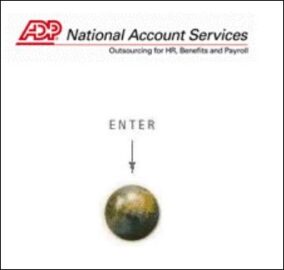
If you manufacture a product, these costs would include direct materials and labor along with manufacturing overhead. Most of the components of a manufactured item will be raw materials that, when received, are recorded as inventory on the balance sheet. Only when they are used to produce and sell goods are they moved to cost of goods sold, which is located on the income statement.
- The formula for period costs is simply adding up all costs that are classified as period costs.
- These costs are not part of the manufacturing process and are, therefore, treated as expense for the period in which they arise.
- All the period costs are recorded in the income statement and cash flow statement of the company.
- Only when they are used to produce and sell goods are they moved to cost of goods sold, which is located on the income statement.
- Examples of period costs include rent and utilities of admin offices, finance charges, marketing and advertising, commissions, and bookkeeping fees.
This classification relates to the matching principle of financial accounting. Therefore, before talking about how a product cost differs from a period cost, we need to look at what the matching principle says about the recognition of costs. While product costs are directly tied to the creation and development of a software product or technology solution.
According to generally accepted accounting principles (GAAPs), all selling and administrative costs are treated as period costs. Costs that become part of the cost of goods manufactured are called product costs. Such costs are incurred on manufacturing process either directly as material and labor costs or indirectly as overheads.
Product Costs vs Period Costs
Product costs are related to the cost of purchasing inventory for sale or performing a service. Meanwhile, period costs are costs that are not related to production but are essential to the business as payroll compliance a whole. It’s important to distinguish between product vs period costs because the former must be deducted when a good or service is sold, whereas the latter is deducted in the period it is incurred.

Selling expenses are incurred to market products and deliver them to customers. Administrative expenses are required to provide support services not directly related to manufacturing or selling activities. Administrative costs may include expenditures for a company’s accounting department, human resources department, and the president’s office.
Costs on Financial Statements
If advertising happens in June, you will receive an invoice, and record the expense in June, even if you have terms that allow you to actually pay the expense in July. The cash may actually be spent on an item that will be incurred later, like insurance. It is important to understand through the accrual method of accounting, that expenses and income should be recognized when incurred, not necessarily when they are paid or cash received.

Mary Girsch-Bock is the expert on accounting software and payroll software for The Ascent. You’ll also be able to spot trouble spots or overspending in administrative areas or if overhead has ballooned in recent months.
How to calculate product cost
Per-unit cost is calculated by dividing your costs by the number of units produced. It is an important metric, particularly when determining product pricing. A period cost is any cost consumed during a reporting period that has not been capitalized into inventory, fixed assets, or prepaid expenses. This article looks at meaning of and main differences between the two such cost bifurcations – product cost and period cost. Period costs are calculated by identifying costs classified as period costs. Most companies use two different definitions of total product cost and Inventoriable product cost.
- Managing your costs is doubly important if you own a manufacturing business, since you’ll need to manage both product and period costs.
- The difference between period costs vs product costs lies in traceability and allocability to the business’ main products and services.
- Knowing the true costs of development can help you determine what features to build, whether for an MVP or for your next major update.
- Direct material costs are the costs of raw materials or parts that go directly into producing products.
- Whether the calculation is for forecasting or reporting affects the appropriate methodology as well.
Customer research may be the most important step in building and maintaining any product. Many product managers and stakeholders think they know what the customer wants. Sometimes they’re right, but when they’re wrong, the consequences could be disastrous.
You must cCreate an account to continue watching
The cost of labor is unique in that it can be both a product and period cost. This depends on whether the labor is directly related to production or not – a factory worker’s wages would be product costs, while a company secretary’s wages would be period costs. When preparing financial statements, companies need to classify costs as either product costs or period costs. We need to first revisit the concept of the matching principle from financial accounting. Product costs are recorded as inventory in the financial statements until the product has been sold.
Period cost is not in manufacturing or transporting the assets to their final destination. Period costs are on the income statement as expenses in the period they were incurred. You may need to buy state-of-the-art equipment for your developers and other team members. Production costs are usually part of the variable costs of business because the amount spent will vary in proportion to the amount produced.
Product Versus Period Costs
Period costs describe a business’s additional costs incurred during a specific reporting period. While they still form part of the overall cost of running a business, they aren’t directly related to manufacturing a specific good or service. Every business entity has many costs that need to be recognized, recorded, and given a financial statement.
Knowing the true costs of development can help you determine what features to build, whether for an MVP or for your next major update. Time is money in this scenario, so you’ll want to consider how long you expect the development process to take and keep track of the actual timeline of events. Are you going to hire employees, an agency, or freelancers to build your product? You may be envisioning a SaaS product with several features and components. It can be costly to fully build out this level of complex software and maintain it. You’ll also need to consider quality assurance processes and maintenance.

They don’t form part of the cost of inventory and thus are expensed to the profit and loss account as and when they are incurred by the entity. Such a treatment of period costs is in accordance with the accrual concept of financial accounting. Costs are classified as period costs if they are non-manufacturing costs incurred during the period. Firms account for some labor costs (for example, wages of materials handlers, custodial workers, and supervisors) as indirect labor because the expense of tracing these costs to products would be too great. Indirect labor consists of the cost of labor that cannot, or will not for practical reasons, be traced to the products being manufactured. Product costs are costs necessary to manufacture a product, while period costs are non-manufacturing costs that are expensed within an accounting period.
Why product cost is important for product managers
Manufacturing overhead costs are manufacturing costs that must be incurred but that cannot or will not be traced directly to specific units produced. In addition to indirect materials and indirect labor, manufacturing overhead includes depreciation and maintenance on machines and factory utility costs. Period costs include selling expenses and administrative expenses that are unrelated to the production process in a manufacturing business.
BD Reports Third Quarter Fiscal 2023 Financial Results – PR Newswire
BD Reports Third Quarter Fiscal 2023 Financial Results.
Posted: Thu, 03 Aug 2023 10:30:00 GMT [source]
These costs are recorded in accounting books as incurred with the same name. Later on, all the expenses are transferred to the income statement and subtracted from the gross profit to find the operating income or EBT of the business entity. Product costs include direct materials, direct labor, and overhead expenses. These costs are capitalized as inventory and become part of the cost of goods sold when the product is sold. Because of the different nature of product and period costs, they receive different accounting treatments.

